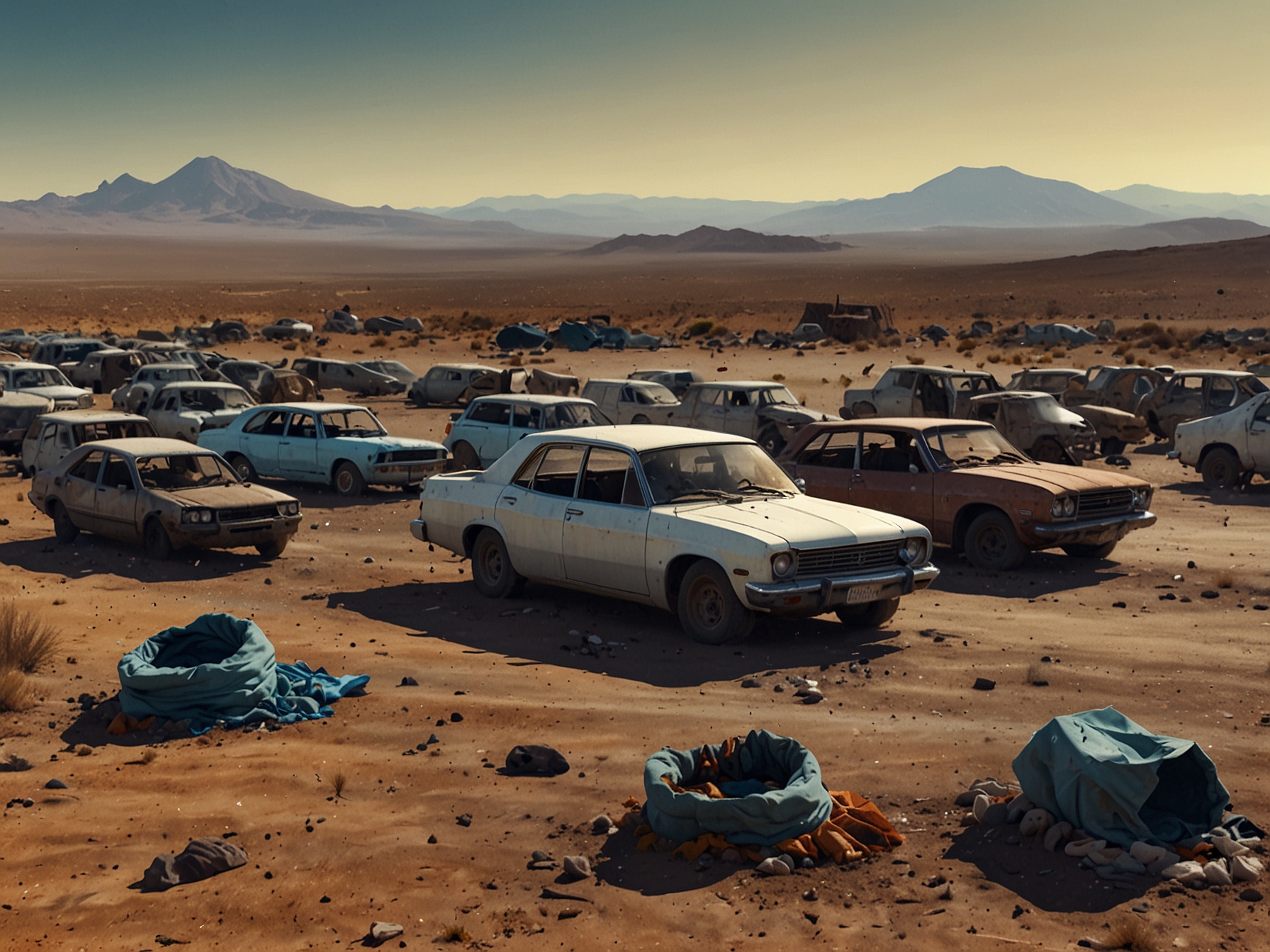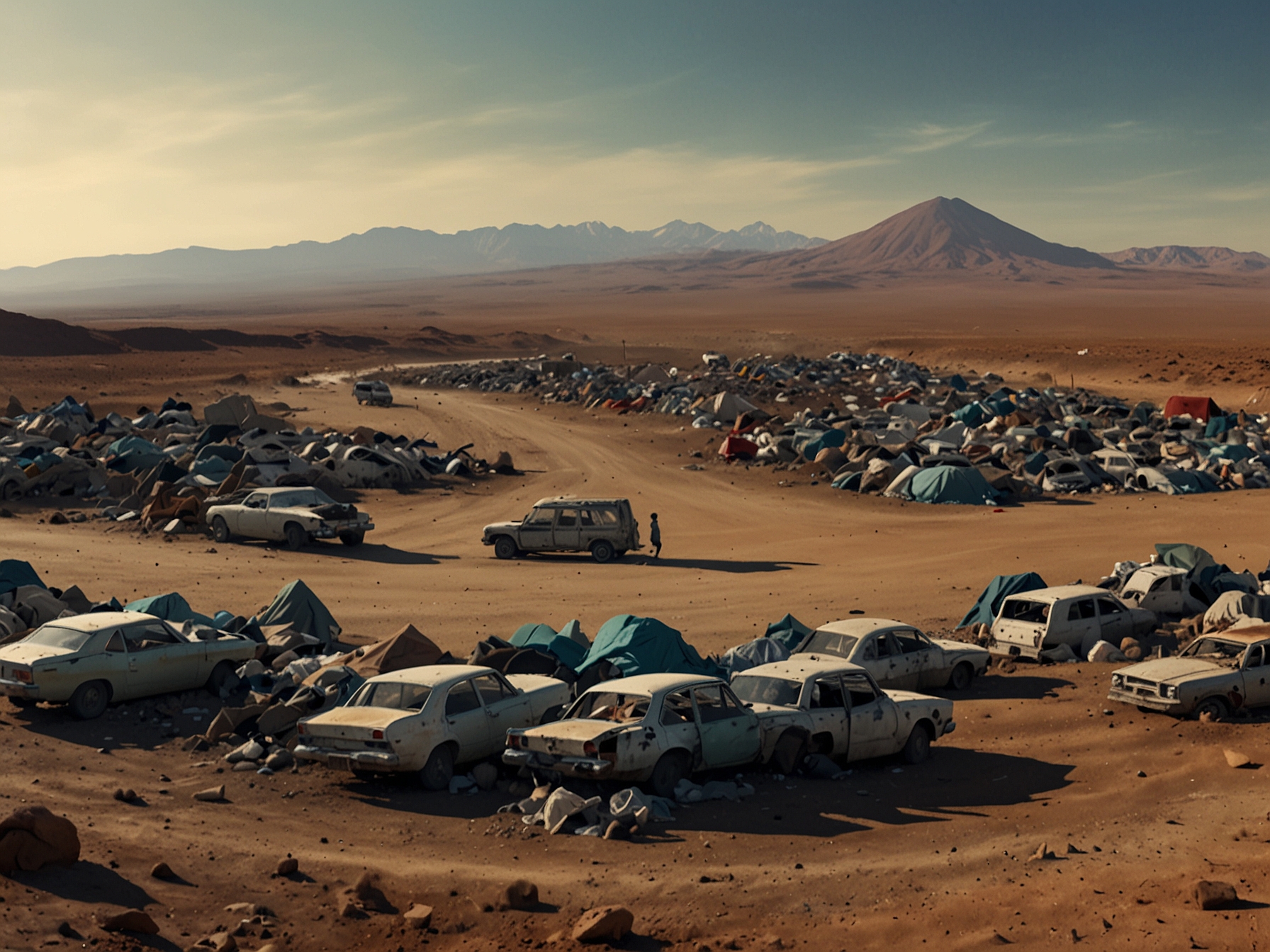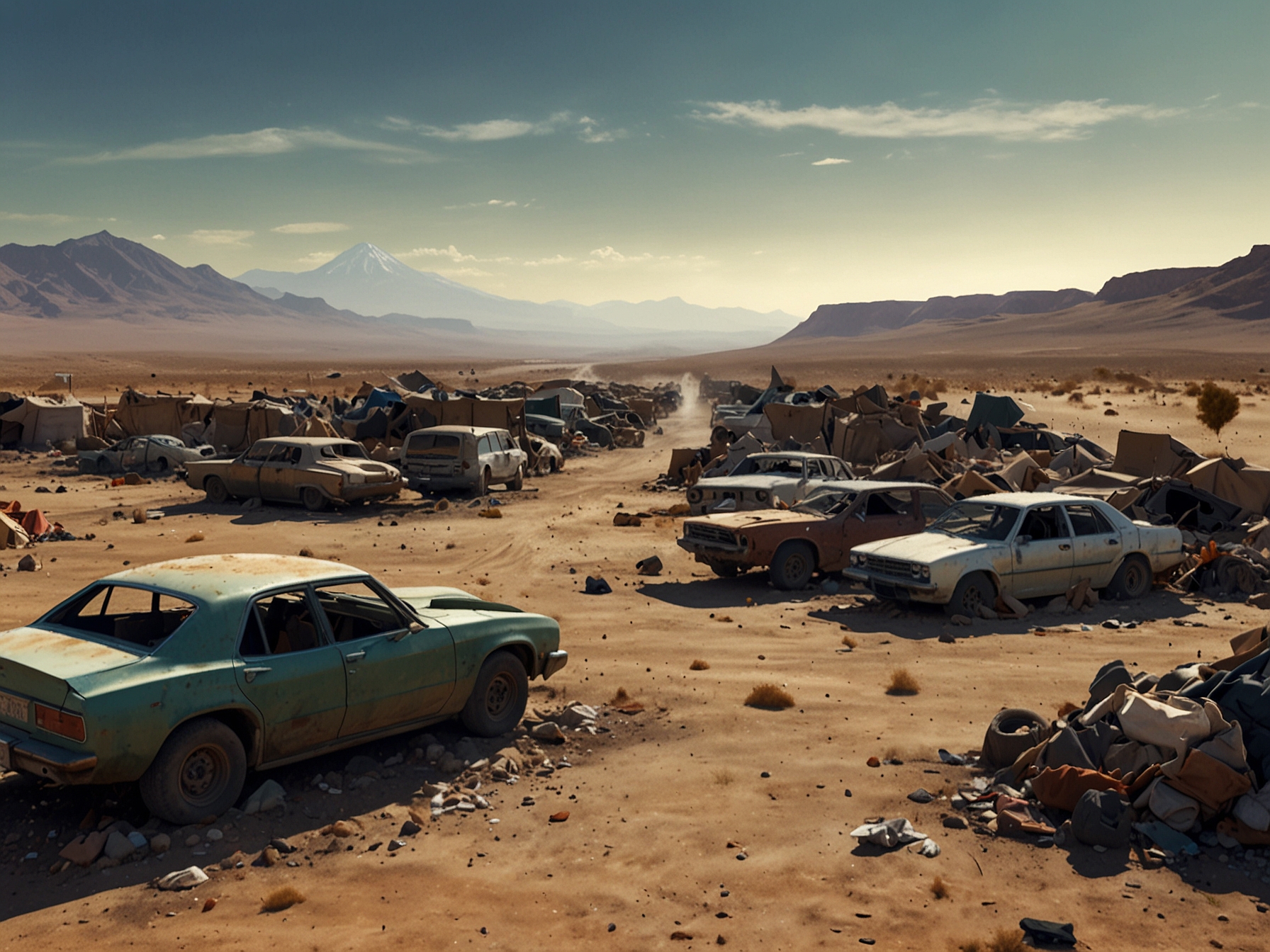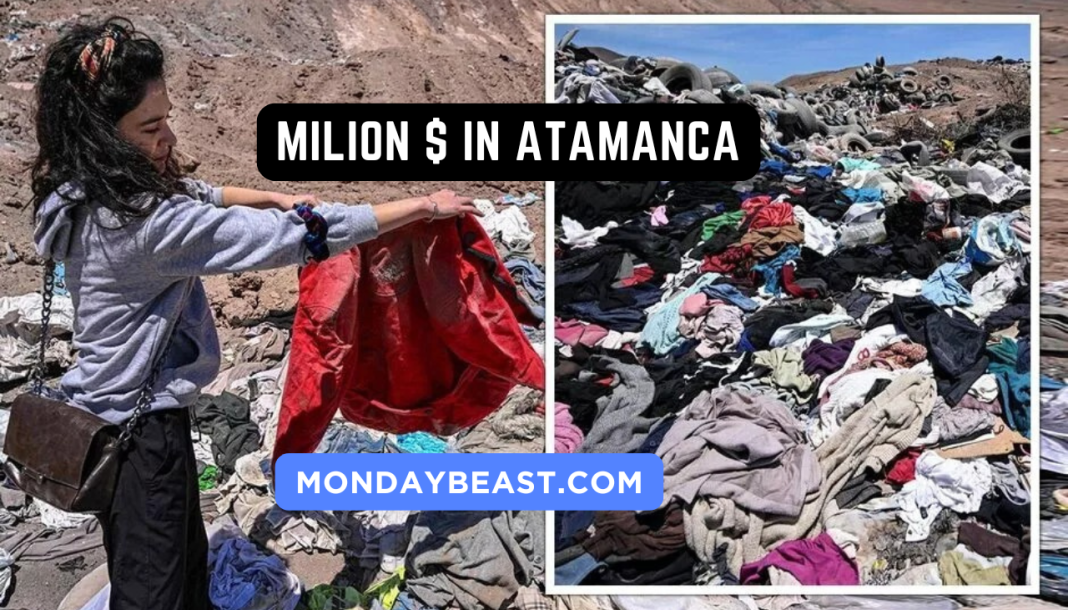The Atacama Desert has earned the nickname ‘Mars of Earth’ for its striking resemblance to the Red Planet. A desolate landscape of rugged hills and arid earth, it once captured the imagination of scientists and adventurers alike. Yet, a grim transformation is underway. It has become the world’s backyard for discarded clothing and waste. How did this happen? What does it mean for the planet?
Every year, around 39,000 tons of discarded clothing find their way to this desolate expanse. Fast fashion, driven by insatiable consumerism, creates waves of textile waste. It’s shocking to think that in 2021, the US, Europe, and Asia sent a staggering 46,000 tons of unwanted clothes to the Atacama. Each piece represents an overindulgent moment in the fast-paced world of fashion.

Patricio Ferreira, mayor of Alto Hospicio, is painfully aware of the burden. “We are not only a local dumping ground, but a world dumping ground,” he laments. His words stir a sense of urgency. Can we afford to think of our waste as someone else’s problem?
A Searing Reality of E-Waste and Castoffs
The plight of the Atacama is not isolated to clothing. Broken cars dot the landscape, remnants of a throwaway culture. Many of these vehicles are shipped in through free trade zones, only to end their days in sprawling car graveyards. It’s a haunting sight.
Orsola de Castro of Fashion Revolution points out a troubling trend. Once, textile waste was reused or repaired. Now, it’s easier to toss it aside and let it travel the globe. But at what cost? Those discarded pieces don’t just vanish; they linger, impacting places far from their origin.

The numbers are staggering. In the UK alone, approximately 13 million clothing items end up in the trash weekly. Of that, a substantial portion finds its way overseas. How can such a wealthy nation carry on with such wasteful practices? This is a question we must grapple with.
Environmental Consequences
The effects of dumping in the Atacama are dire. Fabrics often contain synthetic materials, taking centuries to decompose. Natural fibers, while biodegradable, may be treated with toxic dyes. Activist Paulin Silva emphasizes the health risks these materials pose. Where do we draw the line between convenience and environmental responsibility?
In 2020, a European Parliament report identified textile waste as a significant contributor to global greenhouse gas emissions. Burning those clothes releases even more toxins into the air. Why are we silent about this crisis? Does our addiction to fast fashion justify such harm?

Yet amidst this environmental tragedy, the Atacama proudly hosts life—albeit fragile. Lichens, algae, and wildflowers bloom in unpredictable ways. Researchers like Pablo Guerrero remind us of the delicate balance. Any disruption can trigger devastating consequences.
Global Responsibility and the Future
The situation demands a collective response. As Chile grapples with extreme droughts, authorities have taken action. They established decrees to manage water resources in response to the ongoing crisis. It’s a step towards sustainability but feels woefully insufficient.
Communities long impacted by the growing waste issue deserve action and attention. Ferreira’s plea for global responsibility should not go unheard. Tackling consumer culture may seem daunting. Yet every journey begins with a single step. Can individuals shift their thinking about fashion and waste?
Carmen Serrano from the NGO Endemic Roots encourages readers to think beyond the desert. Viewing it merely as barren hills to exploit indicates a profound disconnect. Rethinking our relationship with clothing might be a feasible start.
In Conclusion
The Atacama Desert stands as a testament to human excess. It illustrates the repercussions of our choices. Can we honestly say we care while remaining indifferent to our waste? As consumers, we hold the power to change. The landscape may be bleak, but it is not without hope. It’s time to rethink our habits before we bury even more of our planet’s treasures beneath our discards.




